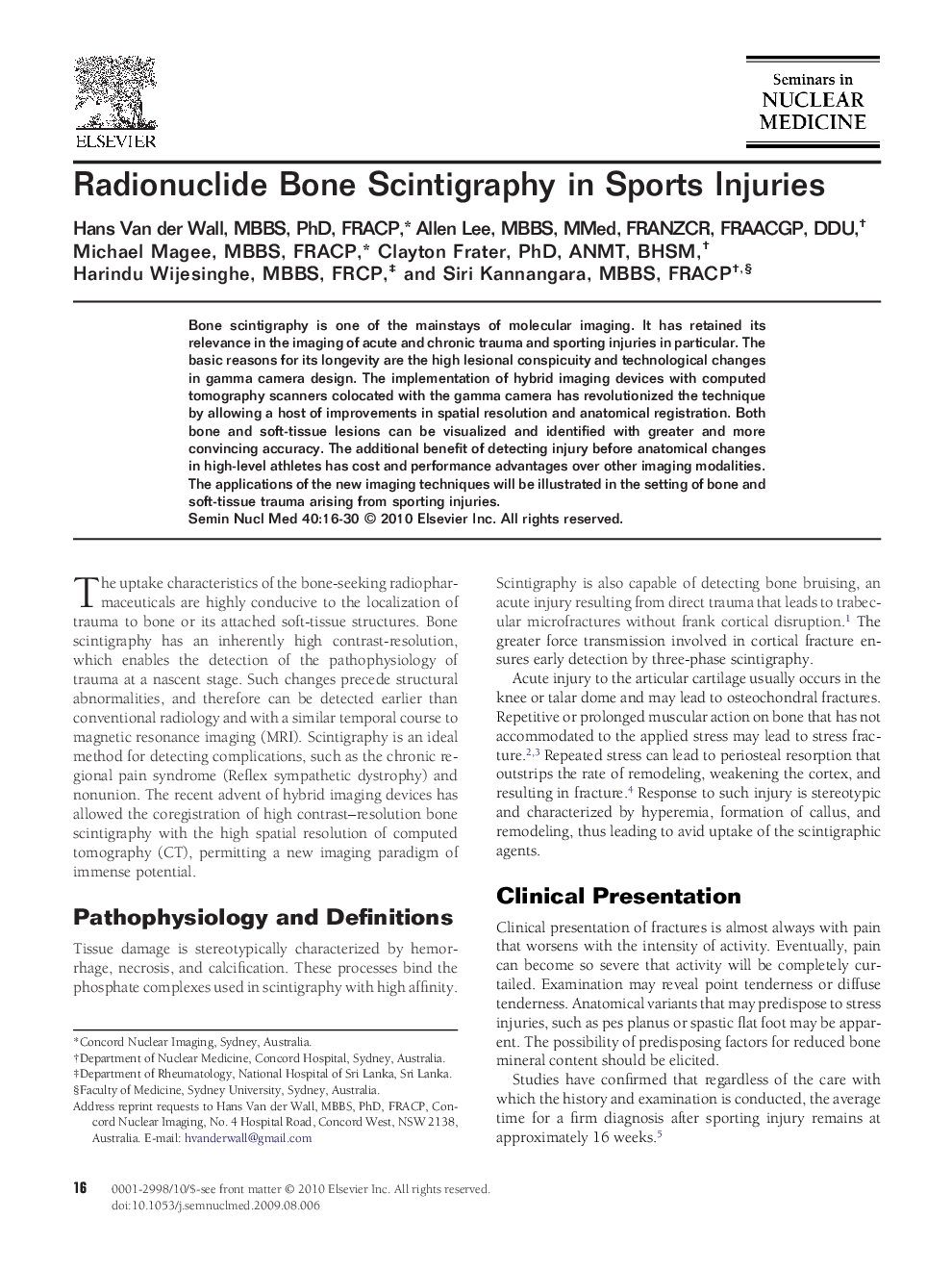| Article ID | Journal | Published Year | Pages | File Type |
|---|---|---|---|---|
| 4251372 | Seminars in Nuclear Medicine | 2010 | 15 Pages |
Bone scintigraphy is one of the mainstays of molecular imaging. It has retained its relevance in the imaging of acute and chronic trauma and sporting injuries in particular. The basic reasons for its longevity are the high lesional conspicuity and technological changes in gamma camera design. The implementation of hybrid imaging devices with computed tomography scanners colocated with the gamma camera has revolutionized the technique by allowing a host of improvements in spatial resolution and anatomical registration. Both bone and soft-tissue lesions can be visualized and identified with greater and more convincing accuracy. The additional benefit of detecting injury before anatomical changes in high-level athletes has cost and performance advantages over other imaging modalities. The applications of the new imaging techniques will be illustrated in the setting of bone and soft-tissue trauma arising from sporting injuries.
